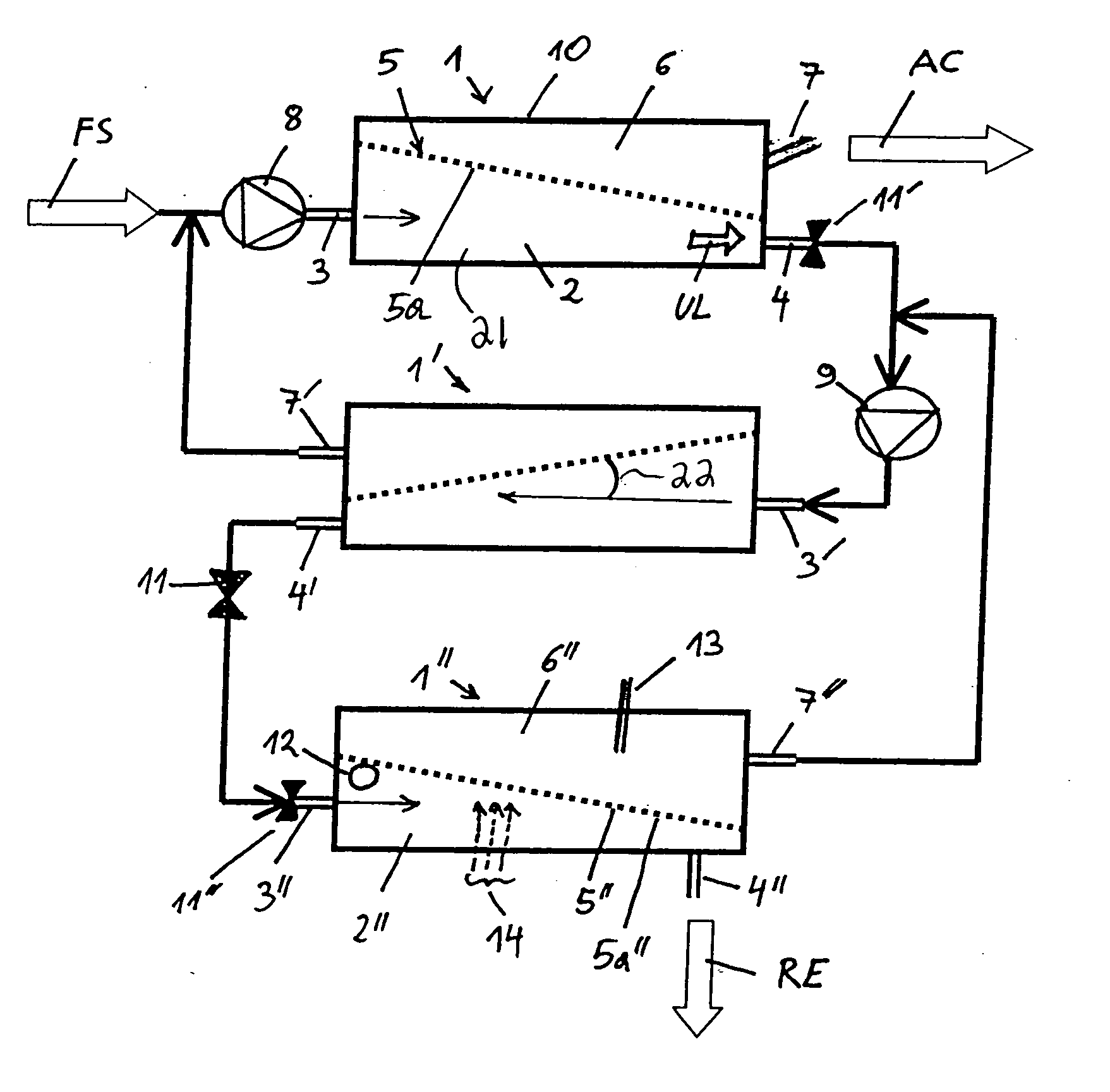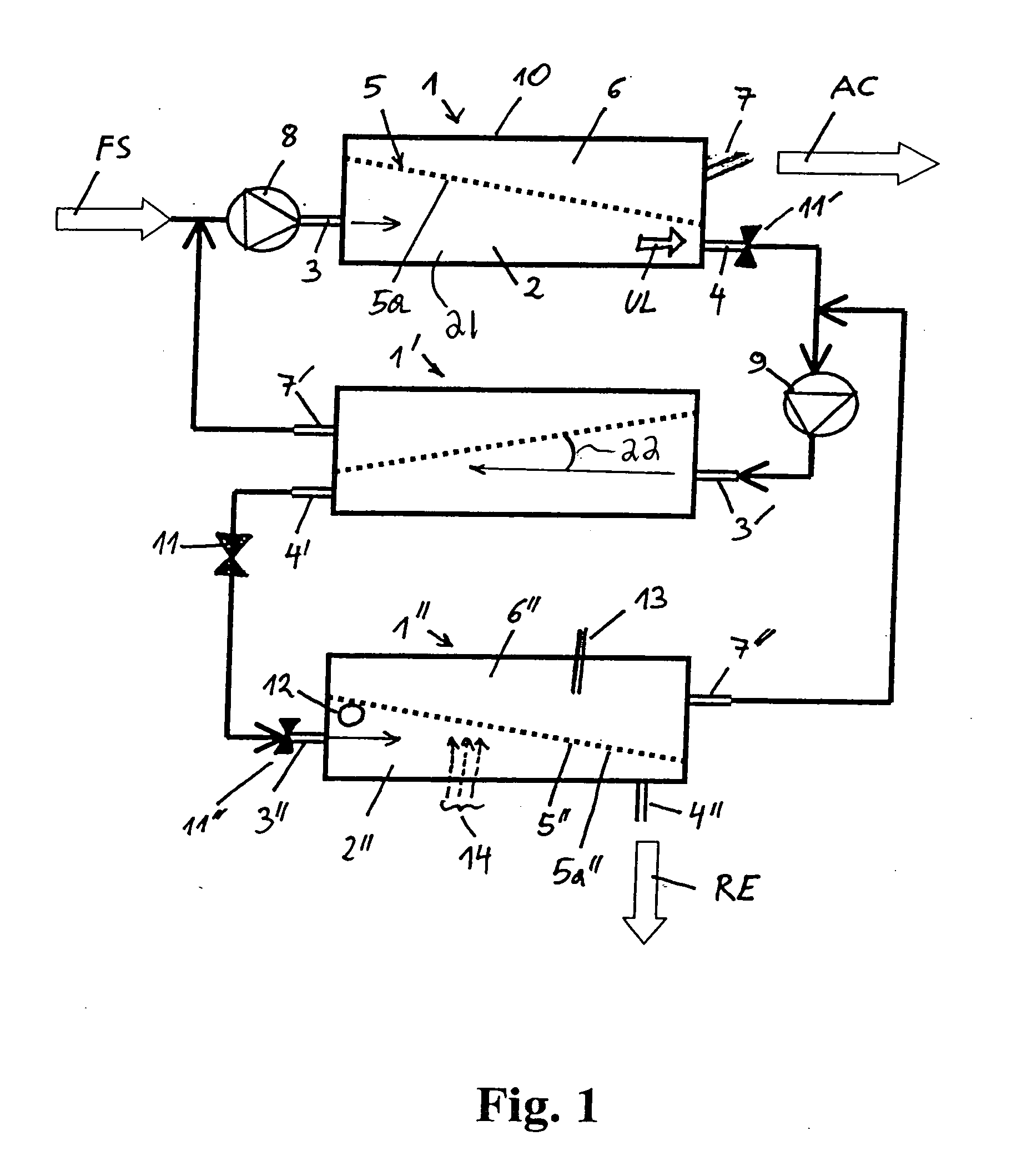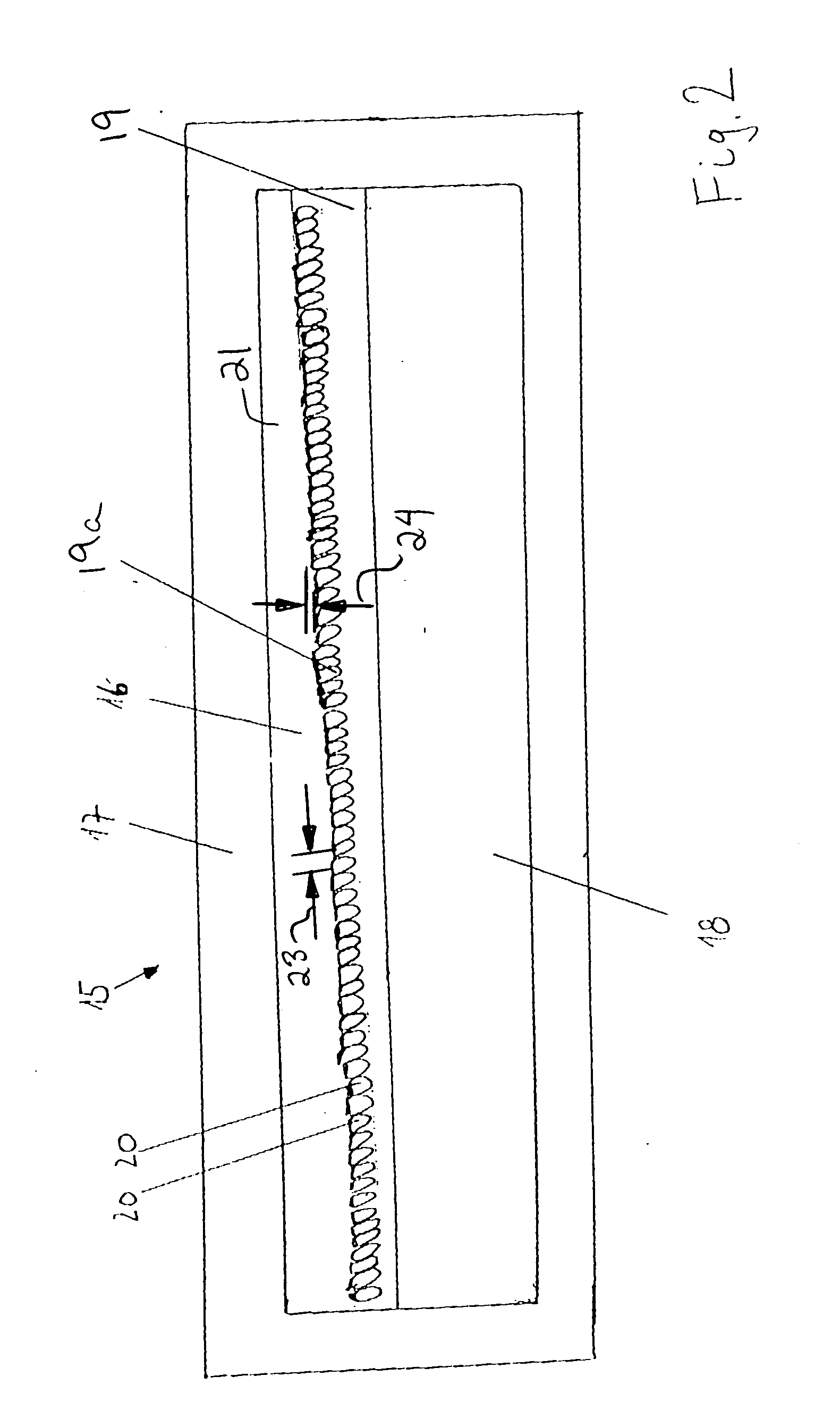Screen
a screen and screen technology, applied in the field of screens, can solve the problems of leakage at the screen, low obtainable throughput, and high maintenance cost of screens, and achieve the effect of high separation accuracy and easy manufacturing
- Summary
- Abstract
- Description
- Claims
- Application Information
AI Technical Summary
Benefits of technology
Problems solved by technology
Method used
Image
Examples
Embodiment Construction
[0043]FIG. 1 shows a 3-stage screening unit for cleaning a pulp suspension with the screens 1, 1′, 1″ according to the invention, mounted in series. The three screens are of similar design, which will be described in more detail on the basis of screen 1. The screen 1 for cleaning a pulp suspension FS has a separation chamber 2, defined by a housing 10, with a pulp suspension feed 3 and a reject outlet 4. A pulp suspension FS is conveyed by a pump 8 through the pulp suspension feed 3 into the separation chamber 2. In the separation chamber 2, an accept chamber 6 with an accept outlet 7 pointing upwards is separated from the pulp suspension feed 3 and the reject outlet 4 by a dividing wall 5 with a screen structure 5a. The dividing wall 5 divides the separation chamber 2 asymmetrically into an accept chamber 6 and a suspension chamber 21. The pulp suspension flows onto the screen structure 5a at high speed, where part of the suspension is pressed through the screen structure 5a and is...
PUM
| Property | Measurement | Unit |
|---|---|---|
| step height | aaaaa | aaaaa |
| step height | aaaaa | aaaaa |
| flow angle | aaaaa | aaaaa |
Abstract
Description
Claims
Application Information
 Login to View More
Login to View More - R&D
- Intellectual Property
- Life Sciences
- Materials
- Tech Scout
- Unparalleled Data Quality
- Higher Quality Content
- 60% Fewer Hallucinations
Browse by: Latest US Patents, China's latest patents, Technical Efficacy Thesaurus, Application Domain, Technology Topic, Popular Technical Reports.
© 2025 PatSnap. All rights reserved.Legal|Privacy policy|Modern Slavery Act Transparency Statement|Sitemap|About US| Contact US: help@patsnap.com



